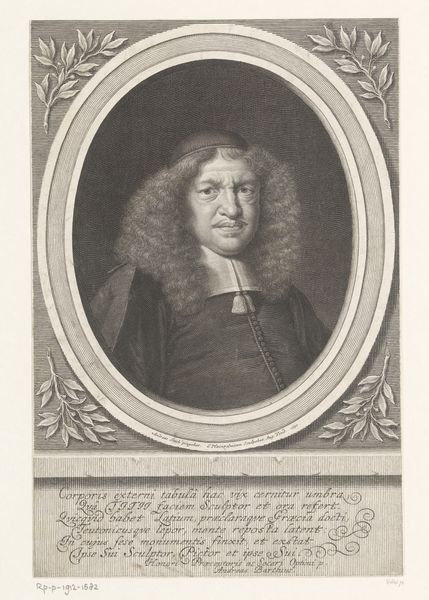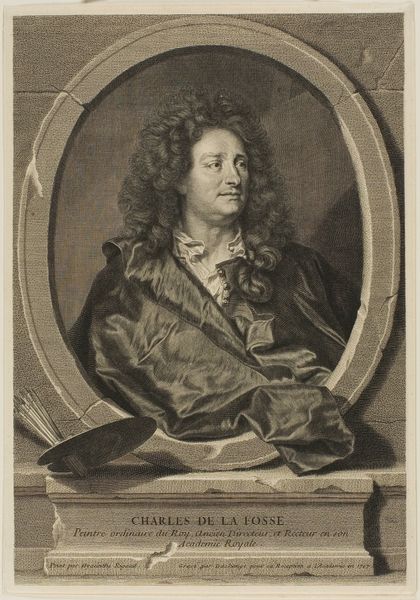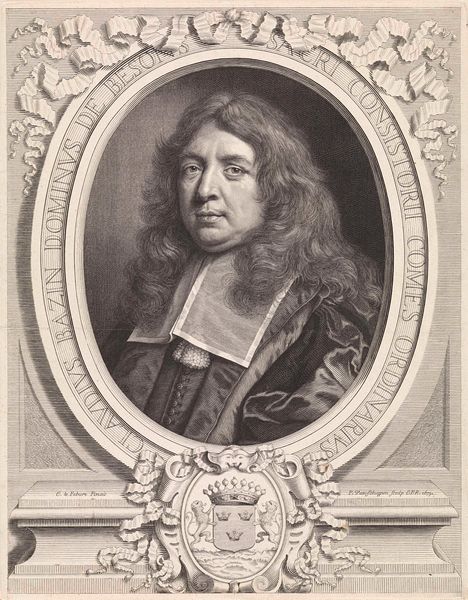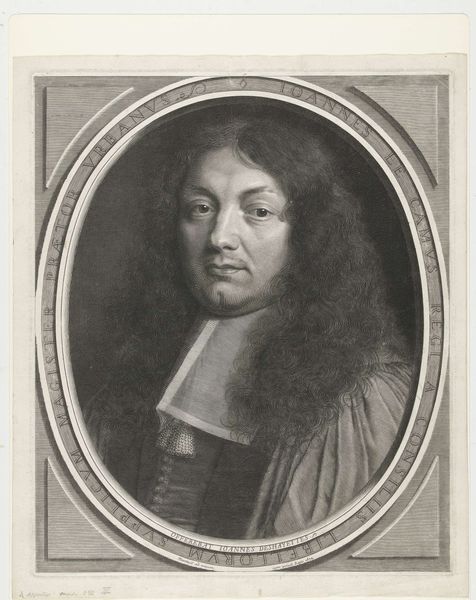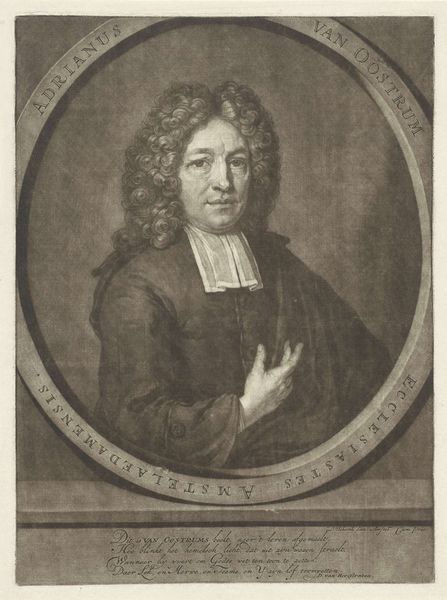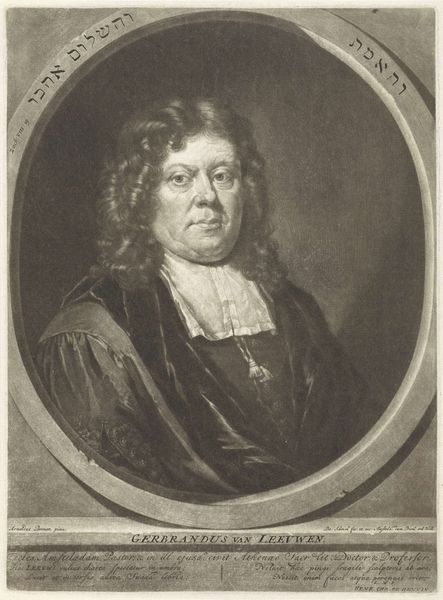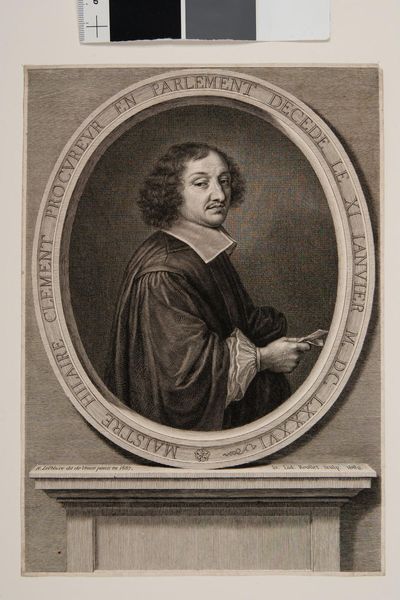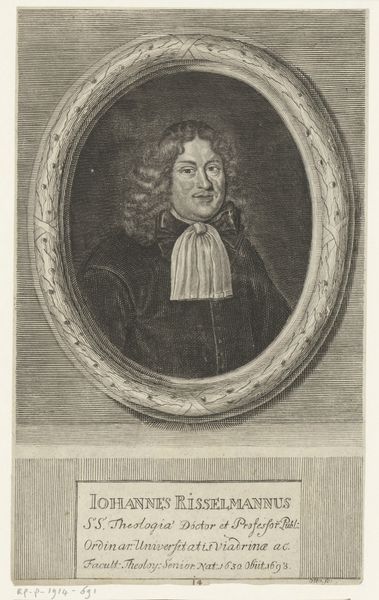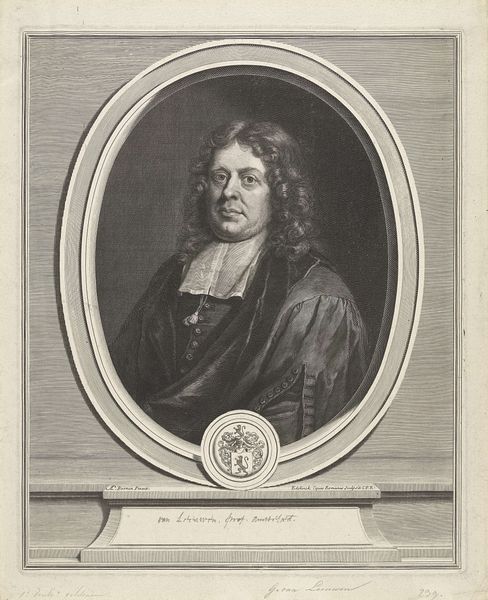
drawing, charcoal, engraving
#
portrait
#
drawing
#
baroque
#
charcoal drawing
#
portrait drawing
#
charcoal
#
engraving
Dimensions: height 453 mm, width 333 mm
Copyright: Rijks Museum: Open Domain
Curator: Look at this arresting portrait! We believe it to be an engraving of Gysbertus Oostrom, a reverend, and it likely dates to the late 17th century. Editor: My first impression? Intrigue mixed with a sense of formality. The dark tones and the subject's direct gaze certainly command attention. What stands out to you initially? Curator: I’m drawn to how the portrait operates as a symbol of authority during a period of intense social and religious upheaval in Europe. Think about the power structures at play. The church, as an institution, had immense influence over people’s lives, and this man was one of its gatekeepers. How does that contextual framework color your reading? Editor: It strengthens it, undoubtedly. Notice how the reverend is positioned. The partially opened curtain suggests both revelation and theatricality, framing him like a performer on a stage, ready to deliver his sermon, as he points outwards as if calling out the audience. Do you see any similar motifs in the piece? Curator: Absolutely, there’s an intentional performance of piety. Also consider the gaze directed straight at the viewer - a challenge? An invitation? And look at the books next to him. It represents established power and the tradition, but the single prop also represents patriarchy and elitism of knowledge. His position gives him agency to interpret this tradition to the public. Editor: And the engraving itself mimics the style that was in fashion then. Through rendering his curls, his robes, and the text with sharp detail, it memorializes Oostrom and reinforces his importance within the community. Do you think the piece fulfills its likely intention? Curator: For sure. Though it is just one snapshot from history, it tells us about so many broader themes still relevant now, which are: power, performance, social control, and resistance. We should examine that further, right? Editor: Without a doubt. Seeing how visual symbolism speaks across time reminds us that representation, then and now, plays a central role in our understanding of culture and ourselves.
Comments
No comments
Be the first to comment and join the conversation on the ultimate creative platform.


